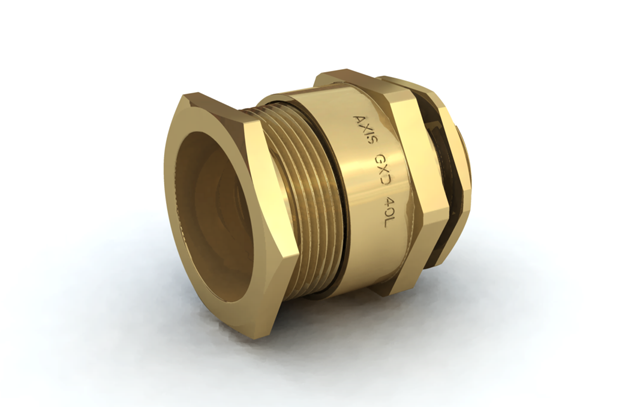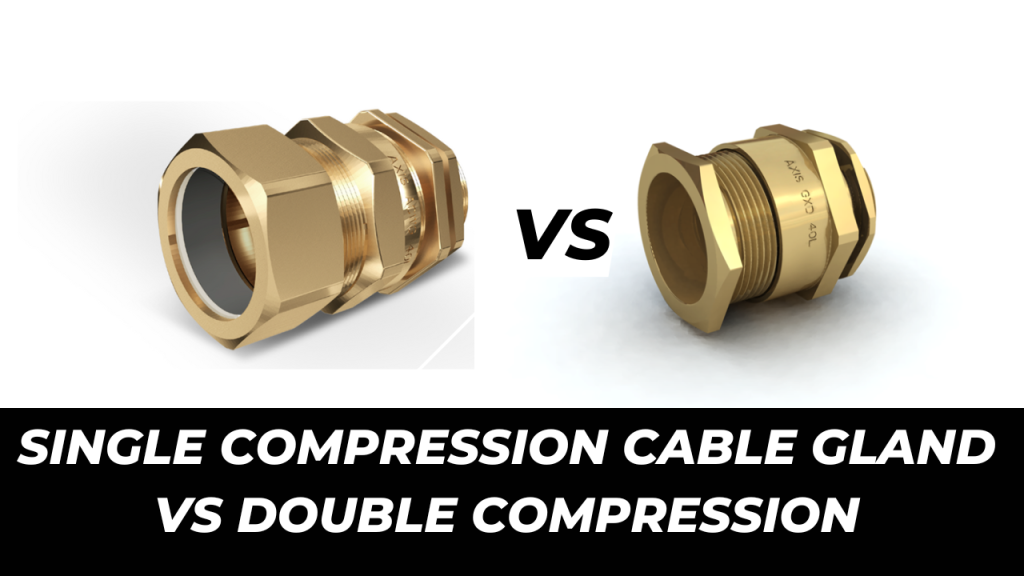What are Cable Glands?
Ever wondered how cables enter and exit electrical enclosures safely? The unsung hero of this process is a small yet significant component: The Cable Gland. Among these, the Single Compression Cable Gland plays a critical role. They not only allow cables to pass through safely, but they also protect against dust and moisture, ensuring the rigidity and firmness of cables. They facilitate the safe earthing of cables, underlining their significance from a safety standpoint.
These glands are devices used in electrical enclosures for the entry and exit of cables. They also serve as sealing mechanisms, preventing the intrusion of dust and moisture into the electrical enclosures. Additionally, they provide mechanical support and rigidity for the cables. From a safety standpoint, cable glands facilitate the electrical earthing of cables.
In this blog, we will focus on two main types of cable glands, the Single Compression Cable Gland and the Double Compression Cable Gland. Each has unique benefits and uses. After reading this blog, you will understand them better and be able to differentiate among them. We will explore how they function, the key differences between them, and how to choose the right one for your needs.
Here’s a video explaining the difference in detail:
Single Compression Glands

A single compression gland, essentially offers grip or compression at only one place, and that is the cable armour. Typically, these glands are chosen for light armored cables.
Their manufacturing is straightforward, comprising of a threaded body, a compression nut, and a single compression seal. These glands are suitable for applications requiring moderate ingress protection and are often selected when there are budget constraints.
One of their key advantages is the ease of installation. The process is simple, involving just the insertion of the cable through the gland, tightening the compression nut, and securing the cable. This simplicity also makes them more cost-effective. You can see the detailed installation process of a single compression cable gland here.
However, it’s important to note that single compression glands offer less protection against dust, moisture, and other impurities compared to the double compression glands. They’re typically employed indoors or in less demanding environments.
Double Compression Glands

These Glands feature two compression seals. First is an inner seal that grips the cable jacket and the second is the outer seal for additional ingress protection. This dual-sealing mechanism significantly enhances protection against dust, water, oil, hazardous gases, and other impurities, making them particularly suited for outdoor and harsh environments where robust sealing is essential.
These glands are available in various sizes and are ideal for cables up to 1,000 square milli meters, including control cables. Double compression glands provide superior cable retention and strain relief. Their dual-sealing system ensures a more secure and reliable connection, minimizing the risk of cable pull-out or damage. You can see the detailed installation process in this video.
Due to their superior sealing capabilities, double compression glands are commonly used in industries such as oil and gas, marine and petrochemicals, mines and other environments with high exposure to moisture or corrosive substances.
However, these glands are approximately 30% longer and more expensive compared to single compression glands.
Click to have a look at our wide range of Cable Glands!
Conclusion
Choosing between a Single or Double Compression Cable Gland depends on the specific needs of your project. If you are working in a low-risk environment, a Single Compression Cable Gland will be the suitable choice. However, if your project demands higher ingress protection, enhanced reliability, and added support for heavy-duty armoured cables, a Double Compression Cable Gland is recommended.
Remember, it’s all about understanding the requirements and ensuring that the selected cable gland is the best fit for your application. This should only be done by an authorised engineer.
But do you even know how to select the right cable gland for your cable size? Watch this video to learn the correct process.
Thank you for reading the blog, Axis is a leading manufacturer and supplier of AB Cable Accessories and other Electrical Components to over 80+ Countries. To get a quote or to talk to our industry expert visit our contact us section. You can also watch our videos by our experts – click here.








